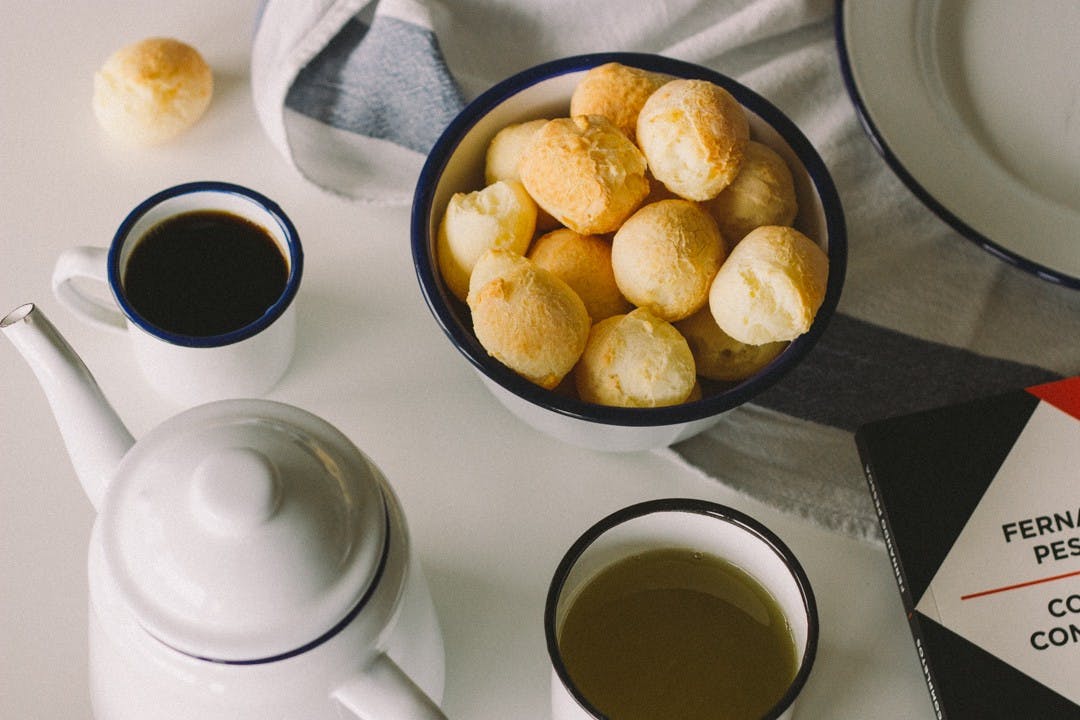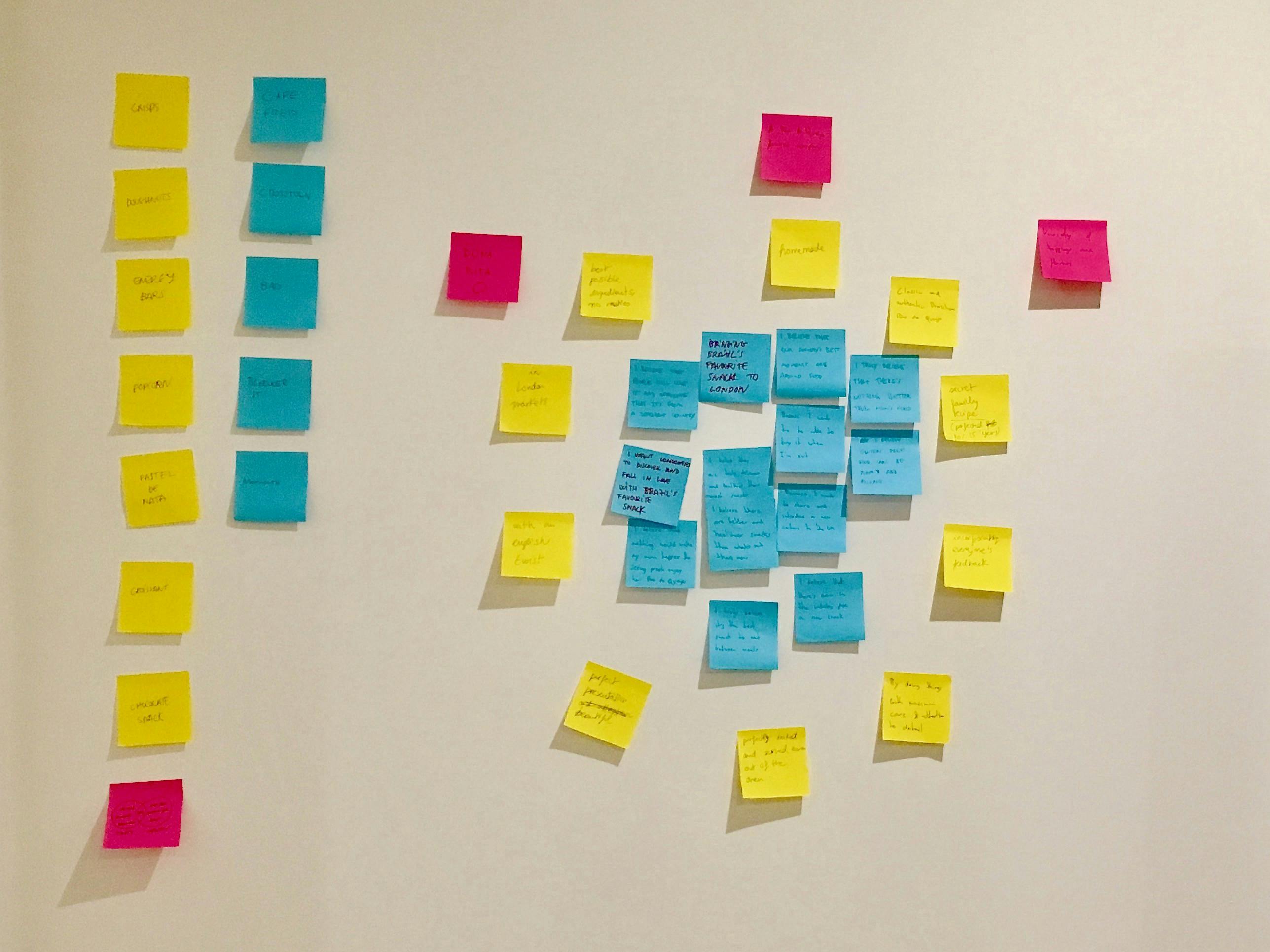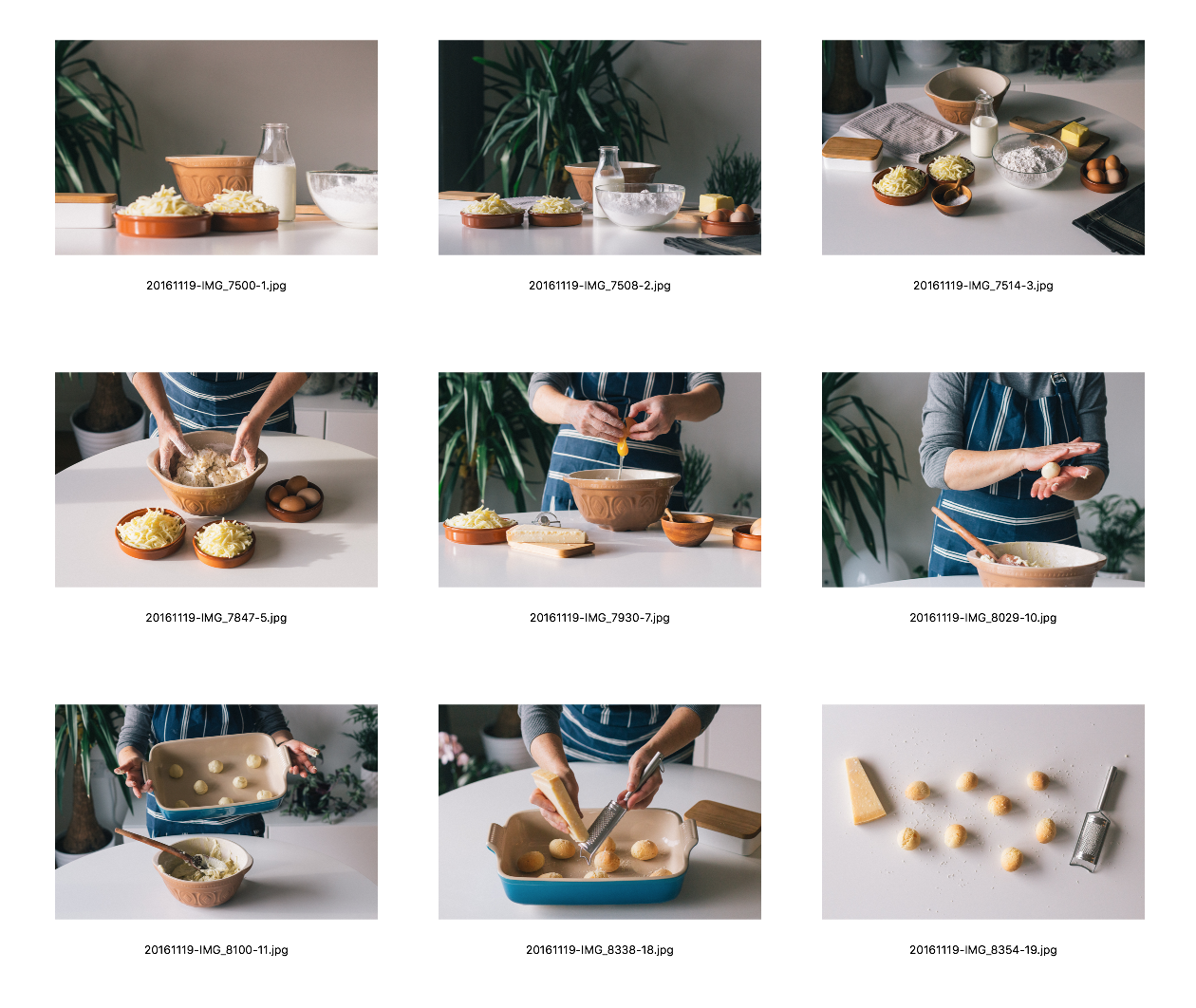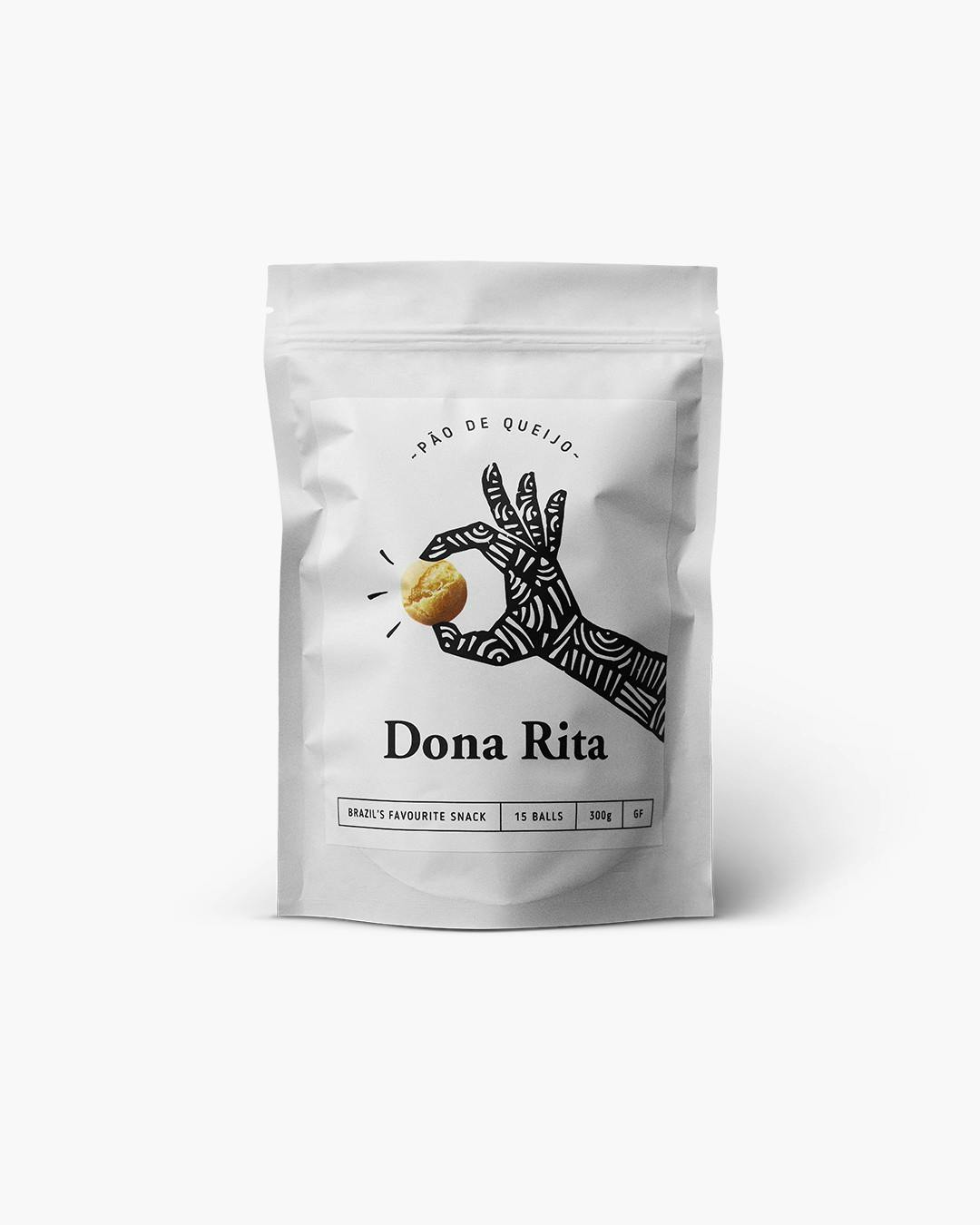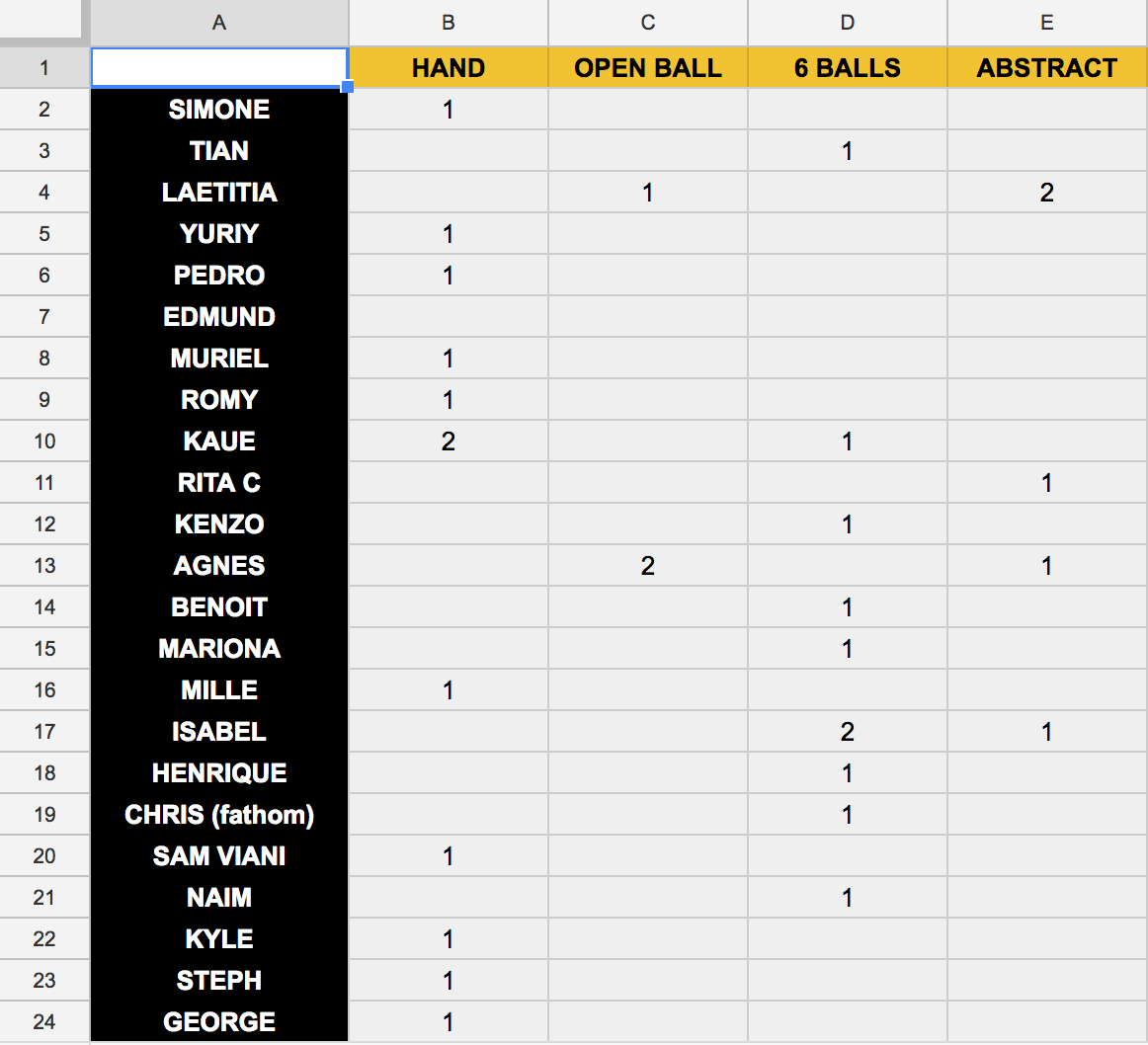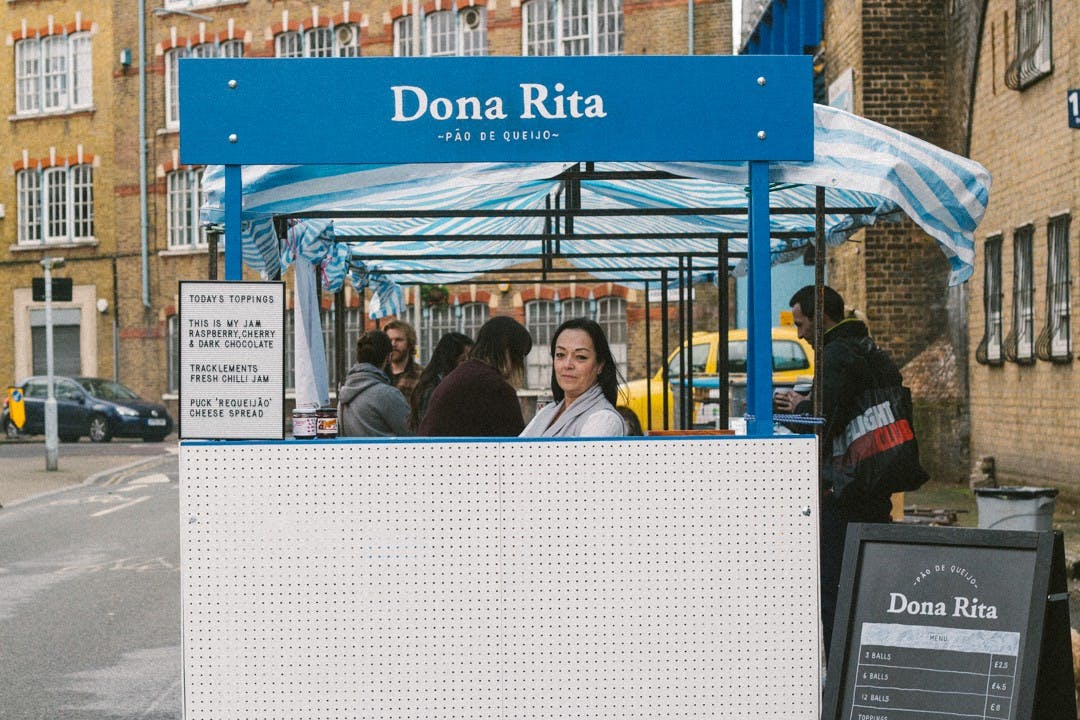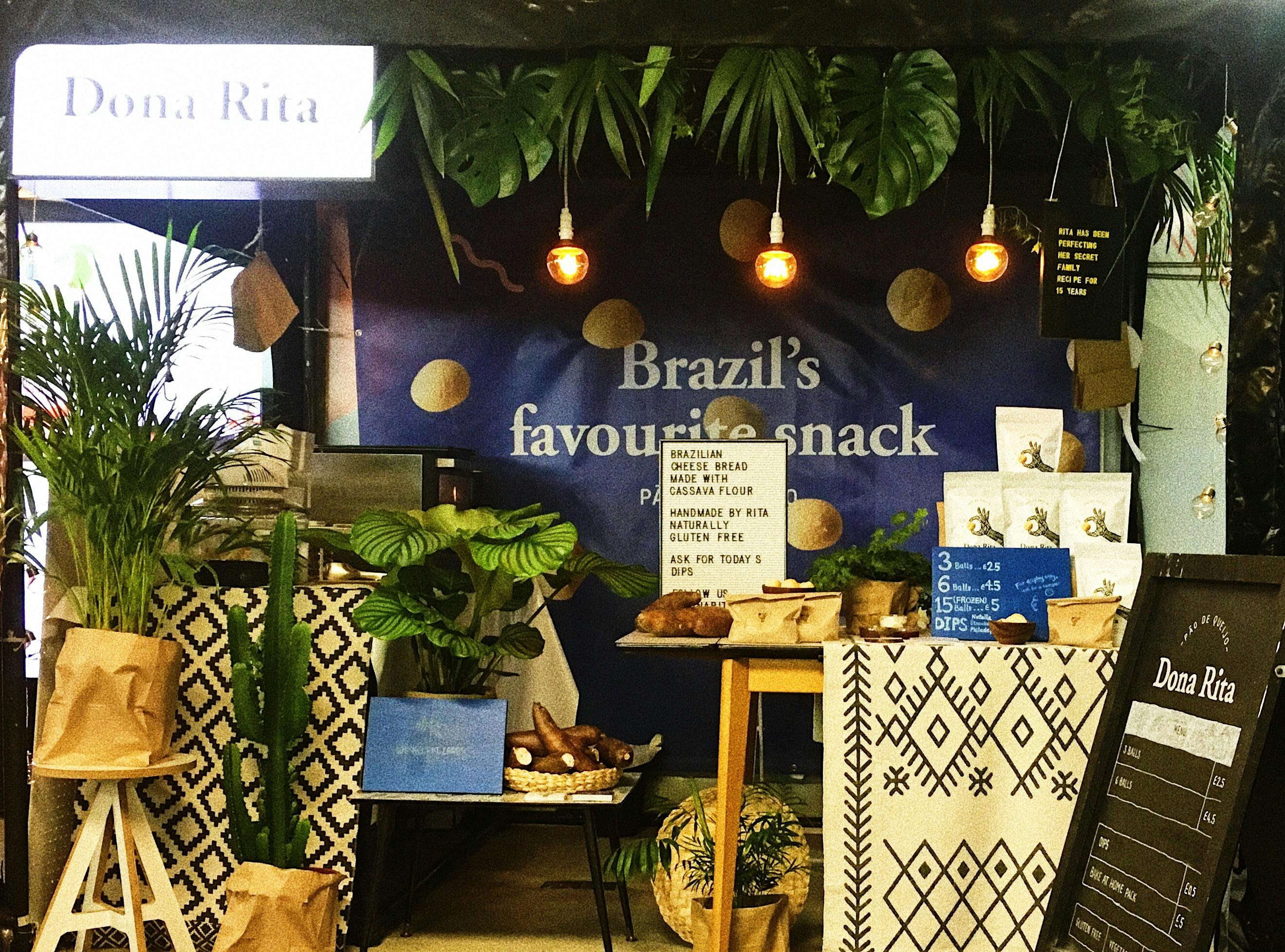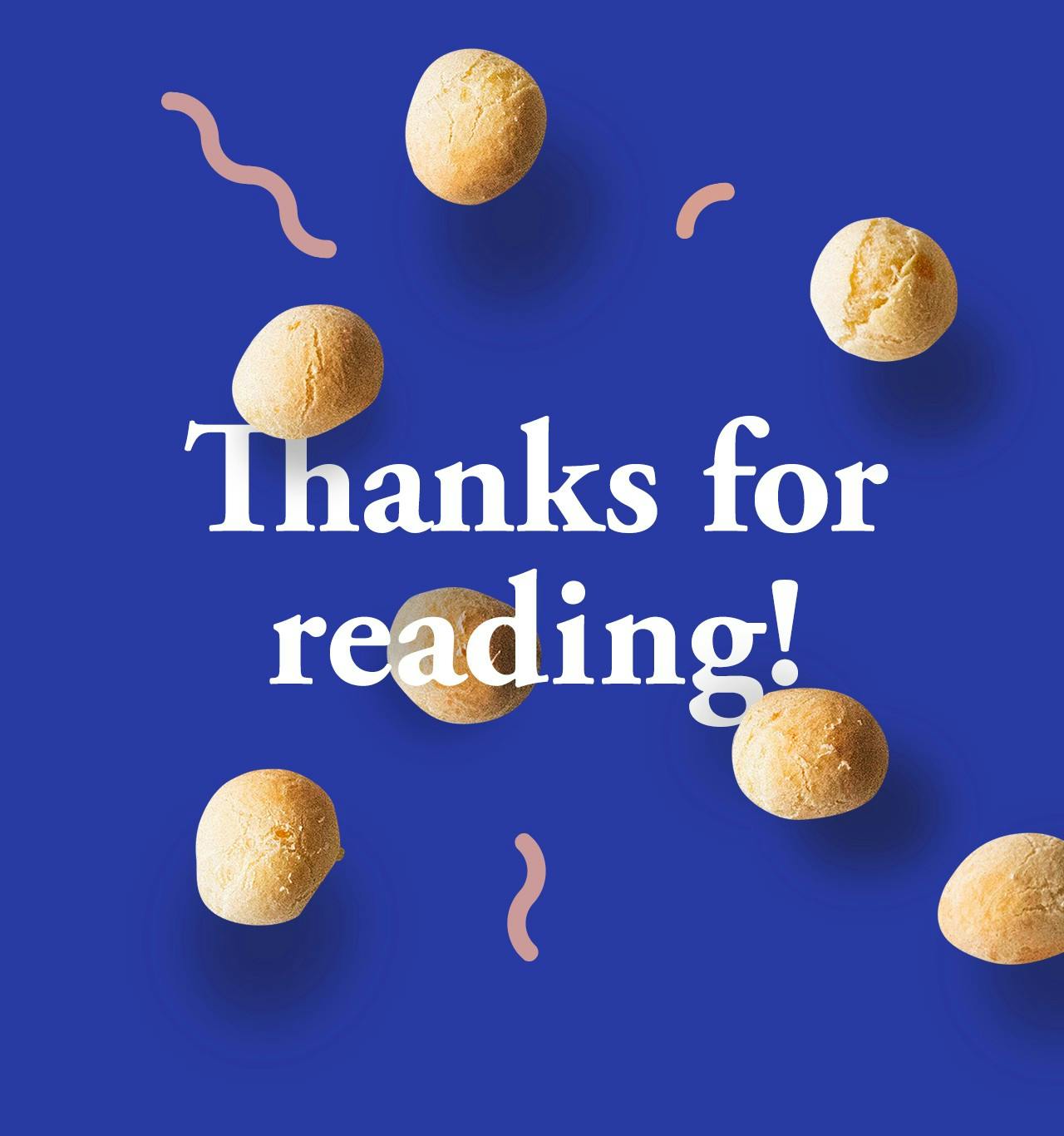Starting a food business from scratch
May 16, 2017
This is a case study on Dona Rita and how we started a food business from scratch, knowing nothing about the food industry. Here I’ll cover our initial process, obstacles, learnings, end product and hopefully loads of tips.
Background
Dona Rita is a new food start-up with a mission to bring Pão de Queijo to London.
Let’s start by introducing ourselves:
- Rita moved to the UK with her family in 2002. Since then she’s always baked Brazilian cheese bread at home. Throughout the years she tried many different recipes until she cracked the perfect one.
- Pedro is Rita’s son. He works as a web developer and likes to take photos. Sometimes he writes articles about things he builds or makes. He’s the one writing this.
- Clara is Pedro’s girlfriend. The idea to start this venture is hers. Being allergic to gluten meant it was pretty much impossible for her to eat nice-tasting bread. When she tried Rita’s cheese bread for the first time she could not believe they were gluten free and became obsessed with them.
- Pão de Queijo translates to “Cheese bread”. From now on I’ll start using this term.
The idea
It never crossed my mind to try and make a business out of selling Pão de Queijo. I guess it’s because I grew up eating them and pretty much always had some at home that my mum used to make.
After Clara became addicted with Pão de Queijo she was always saying that we should start selling them. She was convinced that everyone would love them, and the fact that they’re naturally gluten free would change the lives of many coeliacs out there.
One morning Cara came across this post on Instagram. It was uploaded by our friend Alan from New York, quoting:
I can’t get enough of #paodequeijo
Clearly this was the moment Clara had made up her mind to introduce my mum’s Pão de Queijo to London. I guess our work started there and then. Thanks Alan 👋
The Strategy
With a little hand from Raphael Campos we started putting together an initial strategy for our business. Why are we doing this? How are we gonna do it? Who are our competitors?
This helped us get a broader vision of what our branding and tone of voice would be like, who our target audience would be, where we would position ourselves in the market, etc…
It also served as a reference point, everything we did from then on should be inline with the initial strategy.
Initial learning curve
The skillsets that Clara and I have could cover some of the work, for example: we could do the initial strategy, branding, website, social media, a bit of advertising and anything digital/tech related.
Rita knew exactly how to make the most delicious Pão de Queijo, her secret recipe was already spot on. So our product was pretty much ready.
But we didn’t know anything about the food industry. Where should we start? Apart from creating a virtual brand, how can we put it out there? What sort of licenses do we need? Can the kitchen in our home be used as the kitchen for the business? The list of questions went on…
We spent a fair amount of time researching, reading articles and figuring out the right way to get this business going. And this was the biggest learning curve for us.
**Note **you can find all the links I’ve found helpful at the end of this article.
Minimum Viable Product
As this is a side project Clara and I decided to go MVP with everything. We only had a couple of hours each week day and the weekends to work on this, so time was precious.
When building your own product, it can be quite easy to become emotionally attached to it and allow perfectionism to get in the way of productivity. We had learned that from our day jobs and decided to apply our learnings to this. We started with something that we liked and shipped it. If needed we could always go back and iterate.
Name
One of our first tasks was to choose a name. We shared ideas with our friends, as we thought this was a great way to come up with a name. In the end we decided to go ahead with Dona Rita, thanks to our friend Kaue 👍
Branding
Clara took a weekend to work on the branding. That was enough to get us going. We had a temporary logo, a typeface, a slogan and a colour palette.
Photography
We did a mini-photoshoot that took roughly 4 hours. My mum came round and we baked some Pão de Queijo, luckily for us the weather was good and the perfect amount of sun was shining through our window. The natural light helped give the photos a really nice colour and tone.
At the end we had about 12 photos that would serve as our initial content for social media and the website 🎉
Website
It took us about two days to have something live. We considered using a Squarespace or Wordpress theme but ended up using a simple custom solution. At this stage we didn’t have much content and we weren’t ready to sell online. We went with a one page approach, where all your content lives on one page rather than many different pages with little content. Clara designed the website in Sketch and I built in Atom. I bought the domain on Namecheap and hosted the site on Github Pages.
Overall, the website was well received. It even had the pleasure of being featured on some inspirational websites:
Lovely, minimal One Pager promoting the “Brazilian Cheese Bread” by Dona Rita. A good reference to how less-is-more with only 4 quality (well selected) images used in the whole site.
— onepagelove.com
Packaging
Here’s where things started to get a little trickier. Packaging consists of two parts — the design and the physical packaging. Although they’re different, they’re closely dependant on each other.
We decided to go with a “Stand up pouch” type of packaging and we spent a few hours researching where to buy them from. We started off by trying to buy them from websites such as AliExpress or Alibaba but their Minimum Order Quantity (MOQ) was too high for us. So in the end we found some decent UK based companies (will share the links at the end).
Ideally we wanted to have the branding printed on the packaging, however the MOQ struck again. In order to do that the we’d have to purchase a hell of a lot of pouches. So our MVP solution was to go with a label and manually stick them on the pouches.
We also had some help from the great guys at Granola for Gangsters who gave us the name of the companies they were using for their packaging. Be sure to check them out!
MVP conclusion
We found that the important thing is not to be blocked. Sometimes you may not be satisfied with how things are turning out, but progress is important. As long as you can keep moving you can always go back and improve.
User testing
Our initial users were our friends. Every step of the process so far we asked them for their opinion. We created different spreadsheets for different topics where we kept a record of their response. We always chose the most voted option.
Getting opinions from others proved to be very helpful to us. The main thing is to try and detach yourself from the things you are testing and take every criticism into account.
Product awareness
In order for people to want to buy our product, they needed to know what it was. So we had to find a way to introduce a brand new product to the UK.
Digital appearance
We created Instagram, Twitter and Facebook profiles, started sharing some posts and followed some people who we thought might be interested in our product. After some time, we started getting some followers that were within our target audience. Other Instagram users shared photos of our product (thanks so much theglutenfreesuitcase, eatnlondon, myglutenfreeguide, lorileysesh, scottcaneat) and this helped spread the word.
Physical appearance
We contacted some WeWork offices and arranged to do some pop ups there (thanks for the tip Marina). The idea of doing those pop ups was to get a little bit of experience on how to bake them at a larger scale and to gather feedback from people.
Then after contacting some food markets, we heard back from Druid St Market. We went there to demo our product to Miranda who’s running the show. After doing a trial period of 2 weeks, she offered us a permanent spot and now we’re trading there twice a month.
Finally, we rented a stall at Old Street Station for 2 weeks. This is where we are right now (as of the time of writing this). This is by far the biggest event we’ve done so far. It’s so intense that I’ll dedicate a whole post just for it.
Press
We wrote a Press Release and sent it out to some journalists. Luckily for us we had a couple of mentions that really helped us get some awareness. The Sunday Times posted a photo on their Instagram, Evening Standard wrote an article and Timeout London also wrote one.
Pão de Queijo. ‘What’s that?’ I hear you cry. A wheat-free Brazilian cheese bread, duh: a staple snack found across the country, made from cassava flour and cheese, a crunchy outside giving way to a cloud-like interior. Sounds ace, right? Right
— Timeout London
Where can I try it? I want some!
Great! You can now buy via our website but we’re currently only delivering to certain areas of London (MVP) as we’re having to do the deliveries ourselves.
You can also find us at:
Druid Street Market
We trade at this lovely food market twice a month. We always announce the dates on our website and social media.
Old Street Station Underground
We’re here until the 20th May! Check out our Instagram for opening times and updates.
Free from and Allergy Show
From the 7th till the 9th of July 2017. We’ll be exhibiting at the Allergy and Free From Show at the Olympia Grand in London.
Helpful links
If you are here because you’re starting your own food business I hope the links below can save you some time and headache:
Articles
Tools
- Github — I used this as a Task Management tool, Version control repository and hosting provider. But feel free to use your preferred set up. If this is outside your area, then I recommend at least using Trello as a task management tool, it’s a simple and very powerful tool.
- Sketch — Clara’s design tool of choice 👌
Packaging
- Swisspac Pouches
- Pouch Direct
- Labels (they also offer many more things)
- Nutritional Information
Certificates
Accountancy
- FreeAgent — we’re using Chandler Wells as our accountant and it comes with a FreeAgent subscription.
Credits
We’d like to say a huge thank you 💛 to everyone who helped us, gave us advice, tips, shared with their friends.
Stay in touch
This is just the beginning and if you want to tag along, follow us on Instagram, Twitter or Facebook. If you want to chat, you can email us at oi@donarita.co.uk
